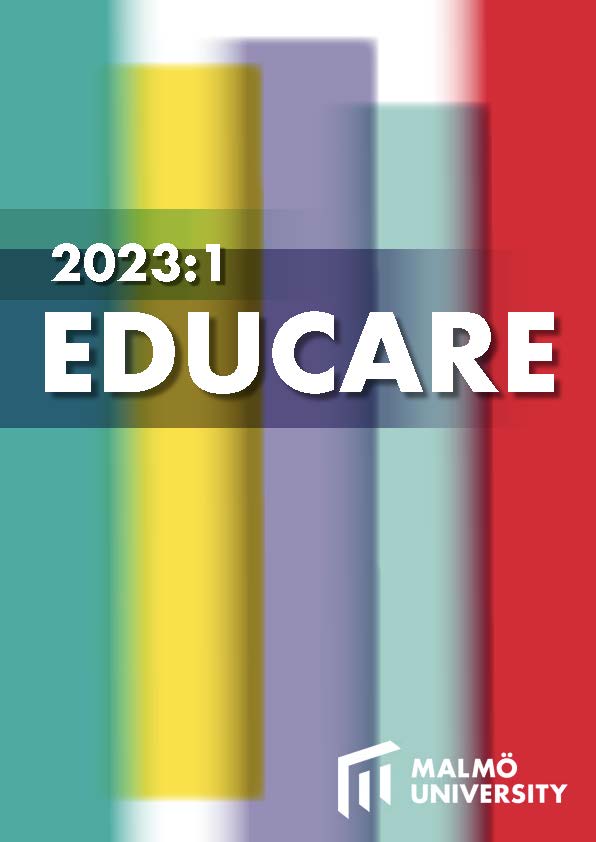"Svag elev" som social representation i Statens offentliga utredningar
Stabilitet och förändring under perioden 1923–2019
DOI:
https://doi.org/10.24834/educare.2023.1.762Keywords:
svag elev, klassificeringar, sociala representationer, temporalitet, Statens offentliga utredningarAbstract
Classifications of pupils as ‘weak’ have featured during the last century in Sweden and are still present in contemporary descriptions of pupils. This study aims to develop knowledge about how ‘weak pupil’ as a social representation has been (re)produced in governmental inquires during 1923–2019 and explores how a temporal perspective might deepen the knowledge on a current classification such as ‘weak pupil’. In focus are the governmental inquiries concerning current or historical compulsory school forms. The following research questions are posed: To what extent has ‘weak pupil’ been present as a classification? How has ‘weak pupil’ as a social representation been (re)produced? Which patterns of stability and change can be identified in the (re)production of ‘weak pupil’ as a social representation? Through social representations theory, this study suggests that classifications and social representations of pupils as “weak” have been present during the last century. There are elements of both stability and change in the themes that construct “weak pupil” as a social representation, but there are indicators that ‘weak pupil’ as a social representation is more fossilized in contemporary writings. Perceptions of pupils in relation to perceptions of ’normality’ seem to be a stable construction over the last century.
Detta är en ny version av artikeln som publicerats eftersom det saknades några rader i tabell 1 i den förra versionen.
References
Ainscow, M. (2005). Developing inclusive education systems: What are the levers for change? Journal of Educational Change, 6, 109–124. Doi: https://doi.org/10.1007/s10833-005-1298-4
Areschoug, J. (2000). Det sinnesslöa skolbarnet. Undervisning, tvång och medborgarskap 1925–1954. LTAB.
Axelsson, T. (2007). Rätt elev i rätt klass. Skola, begåvning och styrning 1910 – 1950. LIU-Tryck.
Barlösius, E. (2005). Die Macht der Räpresentation. Springer-Verlag.
Boman, Y. (2002). Utbildningspolitik i det andra moderna : om skolans normativa villkor. Örebro universitet.
Braun, V. & Clarke, V. (2020). One size fits all? What counts as quality practice in (reflexive) thematc analysis? Qualitative research in psychology, 18(3), 328–352. Doi: https://doi.org/10.1080/14780887.2020.1769238
Braun, V. & Clarke, V. (2013). Successful qualitative research. A practical guide for beginners. SAGE.
Brondi, S., Sarrica, M., Cibin, F., Neresini, F., & Contarello, A. (2012). The Chiampo River 30 Years Later: Long-Term Effects of Environmental Regulations on Social Representations. Journal of community & applied social psychology, 22(4), 283–299. Doi: https://doi.org/10.1002/casp.1111
Bäck, H., Erlingsson, G, Ó., & Larsson, T. (2013). Den svenska politiken - Strukturer, processer och resultat. Liber.
Castro, P. (2015). Social representations of sustainability: researching time, institution, conflict and communication. In Sammut, G., Andreouli, E., Gaskell, G., & Valsiner, J. (Eds.). The Cambridge Handbook of Social Representations. Cambridge University Press.
Ch, D.R., & Saha, S. K. (2018). RemedialTutor: A blended learning platform for weak students and study its efficiency in social science learning of middle school students in India. Education and Information Technologies, 24(3), 1925–1941.
Damavandi, M. E., & Shekari Kashani, Z. (2010). Effect of mastery learning method on performance, attitude of the weak students in chemistry. Procedia – Social and Behavioral Sciences, 5, 1574–1579. Doi: https://doi.org/10.1016/j.sbspro.2010.07.327
Friberg, T. (2021). The ‘weak pupil’ as a social representation: (re)production in dialogue between compulsory school teachers in Sweden. Social Psychology of Education, 24, 895–917.Doi: https://doi.org/10.1007/s11218-021-09637-8
Göransson, K., Nilholm, C., & Karlsson, K. (2011). Inclusive education in Sweden? A critical analysis. International Journal of Inclusive Education, 15(5), 541–555. Doi: https://doi.org/10.1080/13603110903165141
Hedegaard Hansen, J., Jensen, C. R., Lassen, M. C., Molbæk, M., & Schmidt, M. C. S. (2018). Approaching Inclusion as Social Practice: Processes of Inclusion and Exclusion. Journal of Educational and Social Research, 8(2), 9–19.
Hellblom-Thibblin, C. (2004). Kategorisering av barns ”problem” i skolans värld. En undersökning av skolhälsovårdsrapporter läsåren 1944/45 – 1988/89. Elanders Gotab.
Hjörne, E. (2012). Det har skett en stor förändring hemma” – elevidentitet, föräldrars motstånd och ADHD i den svenska skolan. Utbildning och Demokrati, 21(3), 91–106. Doi: https://doi.org/10.48059/uod.v21i3.979
Hjörne, E. & Karlsson. (2011). Institutionellt minnande och skolproblem: Kategorier och specialpedagogiska lösningar. I R. Säljö (Red.), Lärande och minnande som social praktik (s. 387–408). Norstedts.
Hjörne, E. & Säljö, R. (2014). Defining student diversity: categorizing and processes of marginalization in Swedish schools. The practices of dealing with children in need of special support: A Nordic perspective. Emotional and behavioural difficulties. 19(3), 251–265. Doi: https://doi.org/10.1080/13632752.2014.883781
Hjörne E., & Säljö, R. (2017). Categorizing Learners Beyond the Classroom. In: Wortham, S., Kim, D., & May S. (Eds.), Discourse and Education. Encyclopedia of Language and Education (3rd ed.). Springer.
Holquist, M. (2002). Dialogism. Routlegde.
Isaksson, J. (2009). Spänningen mellan normalitet och avvikande: Om skolans insatser för elever i behov av särskilt stöd. Print och Media.
Isaksson, J., Lindqvist, R., & Bergström, E. (2006). School problems or individual shortcomings? A study of individual educational plans in Sweden. European Journal of Special Needs Education, 22(1), 75–91. Doi: https://doi.org/10.1080/08856250601082323
Janssen, T., Braaksma, M., & Riljaarsdam, G. (2006). Literary reading activities of good and weak students: A think aloud study. European Journal of Psychology of Education, 21(1), 35–52. Doi: https://doi.org/10.1007/BF03173568
Joffe, H., & Yardley, L. (2004). Content and thematic analysis. In Marks, D. F. & Yardley, L. (Eds.). Research methods for clinical and health psychology. (s. 56–68). Sage Publications.
Josephson, P., & Lundgren, F. (2014). Historia som kunskapsform. Studentlitteratur.
Karlsson, Y. (2007). Att inte vilja vara problem: social organisering och utvärdering av elever i en särskild undervisningsgrupp. LiU-Tryck.
Larina, G., & Markina, V. (2019). Hidden mechanisms of differentiation: teachers’ beliefs about student diversity. Journal of Mathematics Teacher Education, 23, 463–482. Doi: https://doi.org/10.1007/s10857-019-09436-1
Linton, A-C., Germundsson, P., Heimann, M., & Danermark, B. (2013). Teachers' social representation of students with Asperger diagnosis. European journal of special need education. 28(4), 392–412. Doi: https://doi.org/10.1080/08856257.2013.812404
Linton, A-C., Germundsson, P., Heimann, M., & Danermark, B. (2015). The role of experience in teachers’ social representation of students with autism spectrum diagnosis (Asperger). Cogent Education. 2(1). Doi: https://doi.org/10.1080/2331186X.2014.994584
Linton, A-C., Germundsson, P., Heimann, M., & Danermark, B. (2016). School Staff’s Social Representation of Inclusion of Students with Autism Spectrum Disorder (Asperger). Journal of Education & Social Policy, 3(5), 82–95.
Lundgren, M. (2006). Från barn till elev i riskzon. En analys av skolan som kategoriseringsarena. Intellecta Docusys.
Lundahl, C. (2006) Viljan att veta vad andra vet. Kunskapsbedömning i tidigmodern, modern och senmodern skola. Elanders Gotab.
Marková, I. (2003). Dialogicality and Social Representations. Cambridge University Press.
Middleton, D., & Brown, S. D. (2005). The social psychology of experience: studies in remembering and forgetting. Sage Publications.
Moscovici, S. (1984). The phenomenon of social representations. In Farr, R. & Moscovici, S. (Eds.). Social Representations. Cambridge University Press.
Moscovici, S. (2001). Social representations. Explorations in social psychology. New York University Press.
Moscovici, S. (2008). Psychoanalysis. Its Image and Its Public. Cambridge: Polity Press. (Original work published 1961).
Mugny, G., & Carugaty, F. (1989). Social representations of intelligence. Cambridge University Press.
Nilholm, C., Almqvist, L., Göransson, K., & Lindqvist, G. (2013). Is it possible to get away from disability-based classifications in education? An empirical investigation of the Swedish system. Scandinavian Journal of Disability Research, 15(4), 379–391. Doi: http://doi.org/10.1080/15017419.2012.735201
Norén, F. (2016). Information som lösning, information som problem. En digital läsning av tusentals statliga utredningar. NORDIC JOURNAL OF MEDIA STUDIES, 3, 9–26.
Ogle, V. (2019). Time, Temporality and the History of Capitalism. Past & Present, 243(1), 312–327. Doi: https://doi.org/10.1093/pastj/gtz014
Peréz, J., Aperribai, L., Cortabarría, L., & Borges, A. (2020). Examining the Most and Least Changeable Elements of the Social Representation of Giftedness. Sustainability, 12(13), 53–61. Doi: https://doi.org/10.3390/su12135361
Persson, A. Skola och makt. Om viljan till kunskap, beroendet av utbildning och tvånget att gå i skola. Carlssons Bokförlag.
Polit, D. F., & Beck, C. T. (2010). Generalization in quantitative and qualitative research: Myths and strategies. International journal of nursing studies, (47)11, 1451–1458. Doi: https://doi.org/10.1016/j.ijnurstu.2010.06.004
Regeringskansliet. (24 augusti 2021). Statens offentliga utredningar. http://www.sou.gov.se/fragor-och-svar-om-kommitteer/
Räty, H. (2014). Debating educability: diverging social representations of abilities in Finnish educational discourse. Social Psychology of Education, 17, 457–469. Doi: https://doi.org/10.1007/s11218-014-9260-z
Räty, H., Mononen, N., & Pykäläinen, E. (2017). Essentialism and social representations of intelligence. Social Psychology of Education, 20(4), 915–927. Doi: https://doi.org/10.1007/s11218-017-9399-5
Sandin, B., & Sundkvist, M. (2014). Barn, barndom och samhälle. Gleerups.
Schorske, C. E. (1998). Thinking with history. Explorations in the Passage to Modernism. Princeton University Press.
Schudson, M. (1990). Ronald Reagan misremembered. I. Middleton, D. & Edwards, D. (Red), Collective remembering (s. 108–119). Sage Publications.
Siekkinen, F. (2017). Flerspråkiga elever i en enspråkig elevnorm. EDUCARE, 2017(1), 27–49. Doi: https://doi.org/10.24834/educare.2017.1.3
Tavani, J. L., Zenasni, F., & Pereira-Fradin, M. (2014). Social Representation of Gifted Children: A Preliminary Study in France. Gifted and talented international, 24(2), 61–70. Doi: https://doi.org/10.1080/15332276.2009.11673530
Tosh, J. (2019). Why History Matters. (2 uppl.). Red globe press.
Tuval, S. (2014). Teachers Living with Contradictions: Social Representations of Inclusion, Exclusion and Stratification in Israeli Schools. Papers on Social Representations, 23(2), 10.1–10.25.
Tuval, S., & Orr, E. (2009). Social representations of inclusion and stratification: ethnographic research within two Israeli elementary schools. Disability & Society, 24(4), 503–516. Doi: https://doi.org/10.1080/09687590902879163
Wagoner, B. (2015). Collective remembering as a process of social representation. In Sammut, G., Andreouli, E., Gaskell, G., & Valsiner, J. (Eds.). The Cambridge Handbook of Social Representations. Cambridge University Press.
Westberg, Johannes. (2021). What We Can Learn From Studying The Past: The Wonderful Usefulness of History in Educational Research. Encounters in Theory and History of Education, 22, 227–248. Doi: https://doi.org/10.24908/encounters.v22i0.14999
Young, K. S. (2008). Physical and social organization of space in a combined credential programme: implications for inclusion. International Journal of Inclusive Education, 12(5–6), 477–495. Doi: https://doi.org/10.1080/13603110802377508
Statens offentliga utredningar
Sverige 1940 års skolutredning (1943). 1940 års skolutrednings betänkanden och utredningar Bil. 1 Hygieniska förutsättningar för skolarbetet.
Sverige Ecklesiastikdepartementet 1939 års betygssakkunniga (1942). Betänkande med utredning och förslag angående betygssättningen i folkskolan.
Sverige Utredningen om skolans inre arbete (1974). Skolans arbetsmiljö: betänkande [Elektronisk resurs]. Allmänna förl.
Sverige 2015 års skolkommission (2017). Samling för skolan: nationell strategi för kunskap och likvärdighet: slutbetänkande [Elektronisk resurs]. Regeringskansliet.
Sjögren, A., Holmlund, H. & Öckert, B. (2020). Jämlikhet i möjligheter och utfall i den svenska skolan
[Elektronisk resurs]. IFAU - Institutet för arbetsmarknads- och utbildningspolitisk utvärdering.
års betygsutredning (1977). Betygen i skolan: betänkande. Stockholm: LiberFörlag/Allmänna förl.
Utredningen om kvinnliga skolledare (1980). Fler kvinnor som skolledare - betänkande [Elektronisk resurs]. Stockholm: Liber Förlag/Allmänna förl.
Wigforss, F. (1938). Betänkande med utredning och förslag angående intagning av elever i första klassen av de allmänna läroverken och med dem jämförliga läroanstalter [Elektronisk resurs]. Stockholm: Nord. bokh. i distr.
Downloads
Published
Versions
- 2023-06-13 (2)
- 2023-06-01 (1)
How to Cite
Issue
Section
License
Copyright (c) 2023 Therese Friberg

This work is licensed under a Creative Commons Attribution-NonCommercial 4.0 International License.



